This article is more than 1 year old
Acer: 'We will be the last man standing in the PC industry'
Acer's Jason Chen will give you Win10 for free
Fabric conditioner
The E Series will be available in multiple screen sizes – 14in, 15.6in and 17.3in – and a choice of case colours, including black, white, blue, red and yellow. Chen's reasoning is that plenty of people want a notebook that's powerful enough for work but feels right for home use too. The Skype certification is part of this strategy.
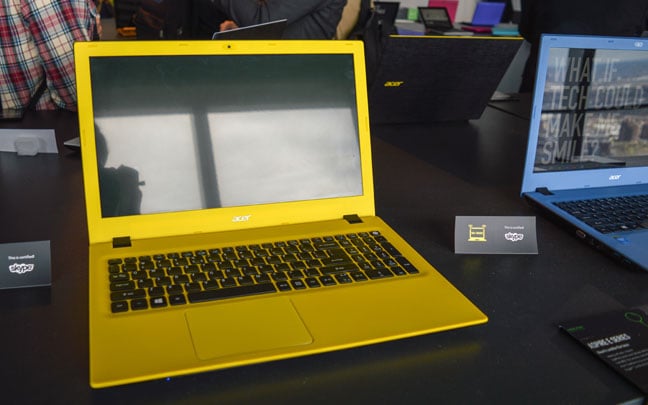
Lots of colours to choose from with the Aspire E Series line – including this banana yellow, which someone somewhere must want
The cheaper ES line is also available in several colours, but with a charcoal grey display bezel. It's an entry-level notebook running on Pentium or Celeron processors, available in five screen sizes from 11.6in to 17.3in, maxing out at 8GB RAM and 1TB hard disk. An internal DVD-RW drive is an option.
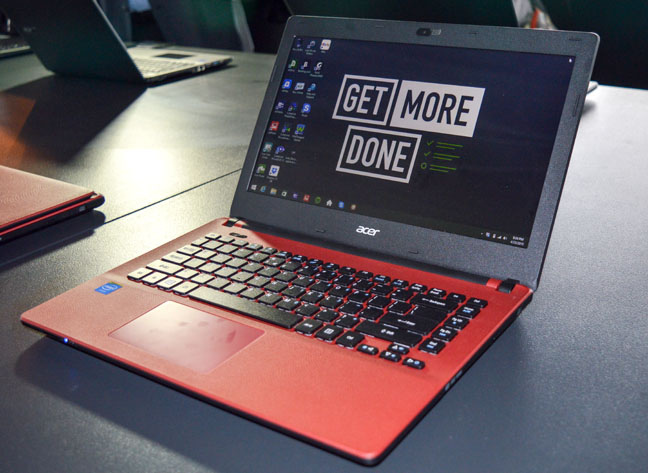
Aspire ES: Where else are you going to find a decent laptop for around £200?
There's a reason why the textured case finish looks as detailed as real textile: it's based on a 3D scan of genuine fabric. It doesn't make the notebook any less slippery in greasy mitts, however.
Acer's president of corporate business planning and operations, Tiffany Huang, told The Reg that the intention behind giving these products a tactile feel is to encourage owners to feel comfortable with them, subliminally perhaps, as everyday household items.
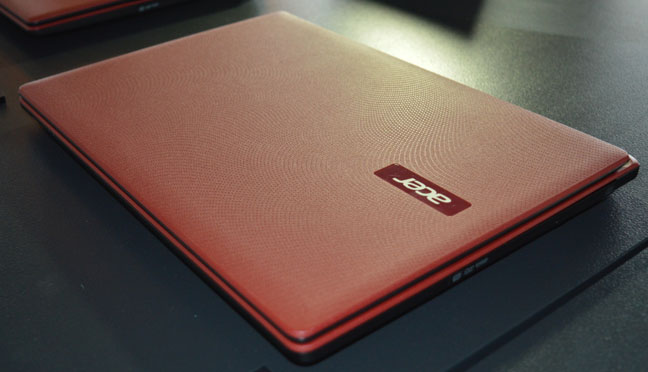
Aspire ES, also available in various colours. Acer reckons that coloured cases are a big selling point at this end of the market
Whether this is a genuine phenomenon or just pop psychology is a case for argument. In Acer's favour, at least the company is thinking about how people use portable and handheld devices as lifestyle objects.
The Aspire E Series will cost from €349 / $379, reaching Europe in May and North America in July. The Aspire ES Series is set to start from €249 / $229, available in Europe in June and North America in July.
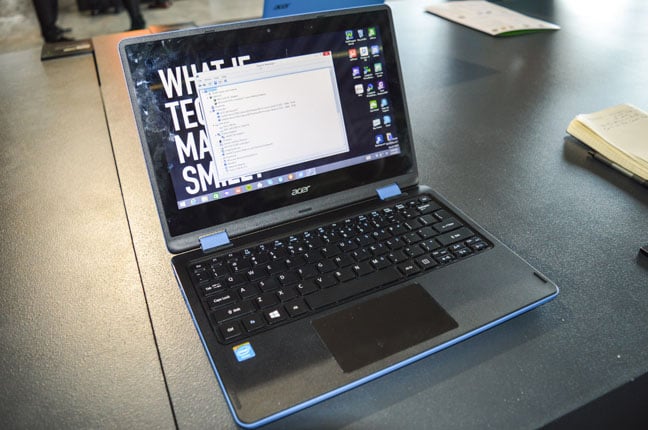
Perfectly formed: The 11.6in Aspire R11 is a diddy little notebook for domestic gadabouts
With the Aspire R11, Acer has launched its smallest 'convertible' notebook, featuring an 11.6in touch display that can be hinged backwards all the way to 360 degrees so that it rests behind the keyboard, tablet PC-style. The hinge is smooth in action but keeps its position stiffly, so it's perfectly usable in fold-back and 'tent' positions for watching videos.
Packing a PC into such a small format produces an illusion that it's quite heavy, and there are some niggles, such as the three-second wait for the screen image to turn upside down when positioning it tent-style.
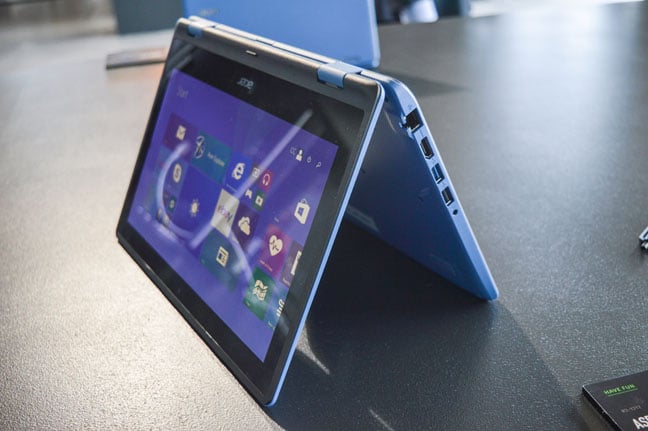
Bent over backwards: The Aspire R11's hinge allows the screen to fold back by up to 360 degrees
We also found it all too easy to switch the notebook off by mistake when picking it up, due to the location and sensitivity of the power button on the right-hand edge.
The variation in screen visibility is a challenge for a notebook that prides itself on its 360-degree hinge. It looks fine from straight on, but tilting it a little forward or back all but destroys the image.

Direct action: The Aspire R11's display is just fine from dead-on but the optimum vertical viewing angle is tight – click for a larger image
The Aspire R11 will cost from €349 / $249, reaching European stores in June and North America the following month.
No less fun to use are the two new Aspire Switch 10 models and the Switch 11. All three are compact "2-in-1" Windows 8.1 notebooks, whose screens can be separated from the keyboard and used as Windows 10.1in and 11.6in tablets respectively. The entry-level Switch 10E has a 1280x800-pixel display, the Switch 10 has 1920x1200.
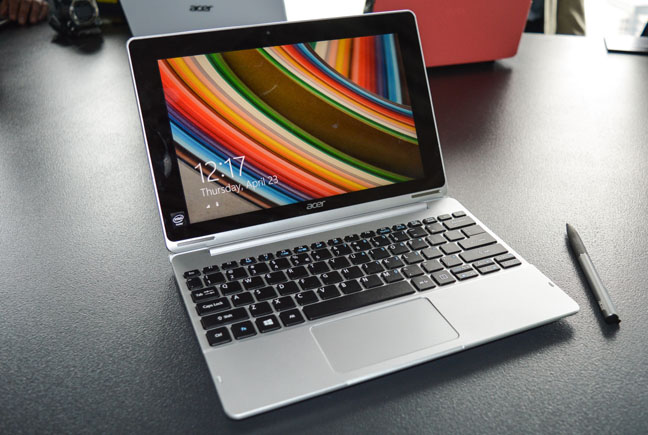
The Aspire Switch 10 makes a cute touchscreen ultra-portable, but its detachable tablet screen makes it top-heavy
The problem with the Switch, as with all 2-in-1s, is that the keyboard is just a keyboard while the computer is packed entirely into the tablet screen. This makes the 600g screen as heavy as the rest of the unit, so folding it back beyond a certain angle will cause the notebook to topple over – unless you hold it down with your palms as you type, or course.
We also found the strong new Snap Hinge 2 connecting the tablet to the keyboard, with its “guiding plane”, sliding internal magnets and satisfying click, was not as simple to reconnect as expected. Even Intel’s head of user experience, Genevieve Bell, fumbled this during the earlier keynote, causing everyone to cringe with embarrassment as she handed the two separate parts back to Jason Chen to click back together, saying she needed a man to help.
The Aspire Switch 10 will start at €449 / $399, hitting European shops in June and North America in August. The Switch 10E comes out a month earlier in both territories, priced from €299 / $279.
